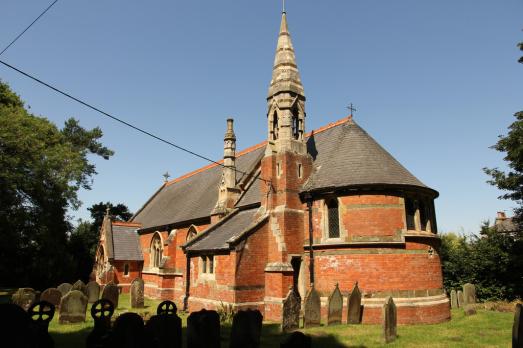A fine church built in 1870, designed by James Fowler of Louth. Created with red brick with limestone ashlar dressings and greenstone ashlar bands, the church sits nestles perfectly within the churchyard. The slate roofs have decorative, red ridge tiles and coped gables. There is a nave, an aspidal chancel, rounded apse, a turret with spirelet and vestry entrance and a south porch, all with steep slated roofs. The walls are of red brick (possibly from local brickworks) with bands of green sandstone.
Take a look at the west window and see if you can spot some of the 13th century glass fragments. Also the pointed organ arch in the north side of the chancel has possible medieval masonry in its construction. There is a small sedilia under the window in the south wall with a pointed arch on each side and panelled back. An ashlar dressed piscina is set beneath the north window. Also look out for the tall 19th century candelabra and the 10th century drum font.
All in all a treasure trove set in the heart of the Lincolnshire Wolds!


